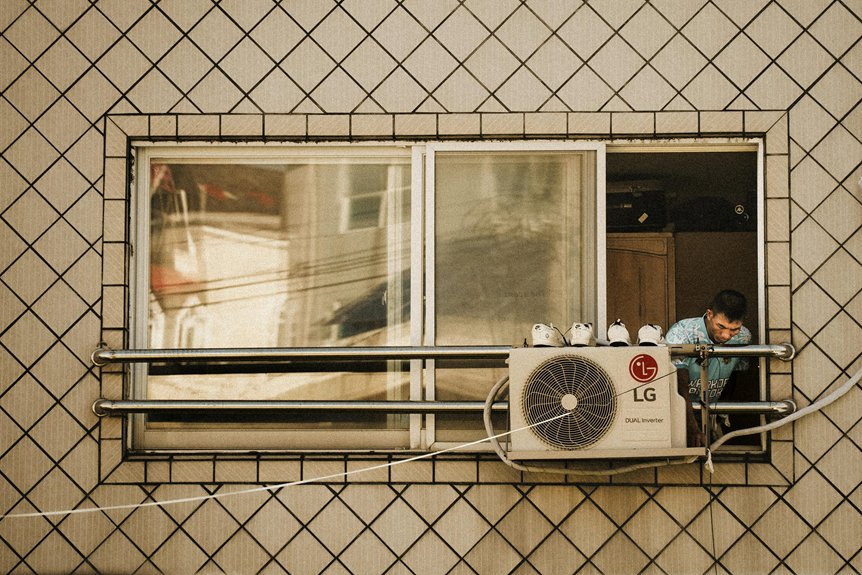Installing a home air conditioning system involves several key steps to ensure optimal function and efficiency. It begins with assessing the site for adequate space, ventilation, and clearance. The outdoor unit should be positioned on a level surface, away from direct sunlight, to enhance its performance.
Indoor components, such as ductwork, must be installed at accessible heights to facilitate maintenance and ensure proper airflow. Electrical connections need to be safely wired, incorporating appropriate controls for ease of use and safety.
A proper setup not only improves comfort but also reduces energy costs and extends the lifespan of the system. For comprehensive guidance, consider exploring essential installation tips and best practices specific to the UK climate and building regulations.
Taking these steps will help ensure your air conditioning system operates efficiently, providing a comfortable environment in your home.
Preparing for Your New Air Conditioning System
Before installing a new air conditioning system, thorough preparation is crucial to ensure a smooth and efficient process.
A comprehensive site assessment involves calculating the cooling requirements of each room by considering factors such as size, ceiling height, insulation, and sunlight exposure.
It’s important to select indoor locations that are free from direct sunlight, heat sources, and moisture. Additionally, leaving sufficient clearance for airflow and maintenance is essential. The structural integrity of mounting surfaces must also be checked, along with the proximity to electrical outlets.
Preparation includes planning drainage paths for condensation and clearing spaces by removing furniture and obstacles. Ensuring that vehicles and old components are moved allows for unobstructed access.
Good preparation minimises delays and creates a safe, efficient environment. This not only makes the installation process more straightforward but also helps ensure that the system operates effectively.
Installing the Outdoor Unit
Proper placement of the outdoor unit is a crucial step in ensuring your air conditioning system operates effectively and has a longer lifespan. The unit should maintain a clearance of at least 2 feet from shrubs or nearby structures to promote good airflow and facilitate easy maintenance. Good airflow is essential to prevent the system from overheating and to ensure it runs efficiently. It’s essential to install it on a level surface, such as a concrete pad, to prevent issues with water accumulation and vibrations. Furthermore, avoid positioning the unit in direct sunlight during peak hours, as this can diminish energy efficiency.
In practice:
- Confirm that the site provides sufficient space around the unit for airflow and accessibility.
- Utilise a sturdy, level foundation for stability.
- Position the unit away from direct sunlight and obstructions to optimise cooling and efficiency.
Setting Up the Indoor Components and Ductwork
Setting up the indoor components and ductwork requires careful planning and precise installation to ensure the system operates efficiently. Professionals mount the air handler at an appropriate height, ensuring easy access for maintenance and optimal airflow. They use levels to keep the unit stable and drill accurate holes for refrigerant and drainage pathways, ensuring they are properly sealed against the elements. The ductwork is then inspected, sealed, and adjusted as needed for compatibility, employing high-quality materials such as insulated flexible ducts. Proper placement in accessible, central locations avoids obstructions and drafts, enhancing the overall effectiveness of the system. Properly installed ductwork also minimizes air leaks, which is essential for maintaining consistent indoor temperatures and improving energy efficiency.
Below is a table illustrating key benefits of correct ductwork installation:
| Comfort | Efficiency | Cost Savings |
|---|---|---|
| Quiet, consistent airflow | Reduced energy wastage | Lower utility bills |
| Improved temperature control | Extended system lifespan | Fewer repairs |
| Peace of mind | Enhanced energy efficiency | Greater satisfaction |
This meticulous setup fosters a sense of belonging, ensuring homeowners can enjoy a comfortable and reliable indoor environment.
Connecting Electrical and Control Systems
Connecting electrical and control systems is an essential step in ensuring the air conditioning unit operates safely and efficiently. Proper wiring mitigates hazards and guarantees the system runs smoothly. Firstly, switch off the main power breaker to avoid any risk of electrical shock. Confirm that the household electrical circuit can accommodate the air conditioning unit’s power demands, and install a dedicated disconnect box close to the outdoor unit for added safety. Secondly, connect the high-voltage cables from the electrical panel to the outdoor condenser using suitable conduit and secure connections. It’s important to label and route control wires meticulously, particularly thermostat wiring, to prevent any interference. Finally, test all connections for tightness and proper seating, ensuring everything is secure. This meticulous approach ensures reliable performance and safety for all occupants in the home. Proper wiring practices are crucial for preventing electrical failures and ensuring compliance with safety standards.
Conclusion
Proper installation of a new air conditioning system is essential for reliable cooling and energy efficiency. By preparing thoroughly, correctly installing both outdoor and indoor units, and safely connecting electrical components, homeowners can enjoy a comfortable, bug-free environment.
It’s crucial to adhere to manufacturer instructions and consider enlisting professional assistance for more complex tasks. A well-installed air conditioning unit not only enhances comfort but also reduces maintenance costs, making it a wise investment in your home’s long-term comfort and efficiency.
Ensure that all components are fitted with precision to optimise performance, as this significantly impacts both the effectiveness of the system and your energy bills. Additionally, regular servicing and maintenance can prolong the lifespan of your air conditioning unit, ensuring it operates at peak performance for years to come.
Choosing the right air conditioning system for your space, along with expert installation, can transform your home into a sanctuary of comfort, regardless of the weather outside.

